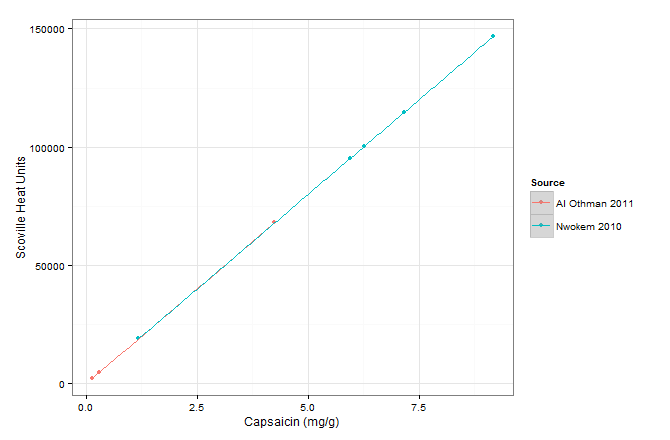The more "dangerous" properties of spicy peppers are chiefly due to capsaicin.
Sigma-Aldrich sells purified capsaicin, for which they provide safety information, including an MSDS. Most of it is the usual, unsurprising set of warnings about irritation to eyes and the respiratory system. However, there are LD50 numbers:
LD50 Oral - rat - male - 161.2 mg/kg
LD50 Oral - rat - female - 148.1 mg/kg
LD50 Dermal - mouse - >512 mg/kg
From this, we can conclude that one would have to eat quite a bit of capsaicin to die. If lethality in humans is exactly the same as rat (which it probably isn't), a 70 kg human would need to consume about 11 g of capsaicin to reach similar levels of lethality.
The Carolina Reaper, one of the hottest known peppers, averages about 1.6 million on the Scoville scale. Capsaicin amount is related to Scoville heat units, so we can make an imprecise conversion from one to the other.
Using values given in 2 publications (Nwokem 2010 and Al Othman 2011) we can observe the following trend:

So on average, about $6.25 \cdot 10^{-5}$ mg/g capsaicin per SHU. With this, we get $(1.6 \cdot 10^5) \cdot (6.25 \cdot 10^{-5}) = 10$ mg/g, or 1% capsaicin for dry Carolina Reapers. To eat the equivalent of 11 g of capsaicin in peppers, you would have to eat 1.1 kg of dry peppers - which should be a couple of dozen.
So, I think we can conclude that it is relatively "feasible" to consume a dangerously large amount of capsaicin by eating very spicy peppers. However, there are numerous caveats with my reasoning:
- Human LD50 and rat LD50 are not necessarily the same.
- Toxicity is not necessarily linearly related to body weight.
- Peppers have compounds besides capsaicin that contribute to hotness.
- It would be very difficult to eat such a large amount of spicy peppers, and various involuntary reflexes would interfere. Even if one were force fed the peppers, I imagine the body would attempt to vomit it up - which brings up the question of how the toxicologists even managed to feed several milligrams of capsaicin to rats to measure the LD50.
